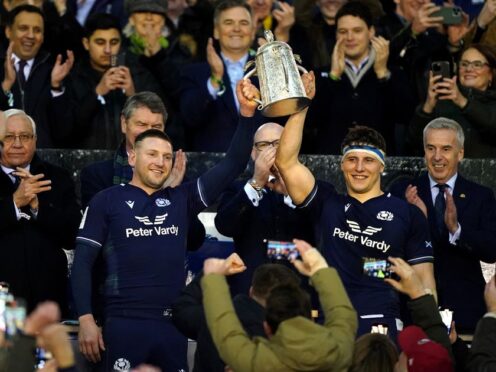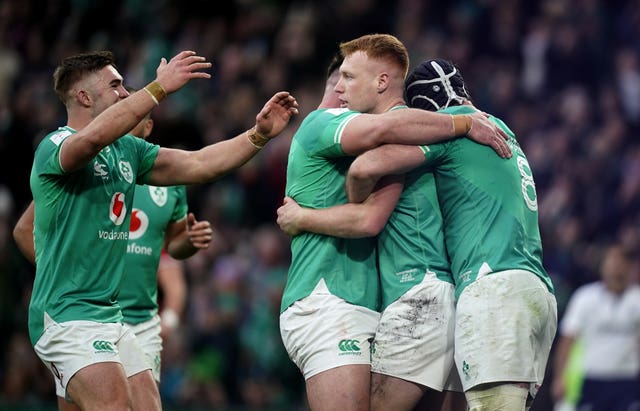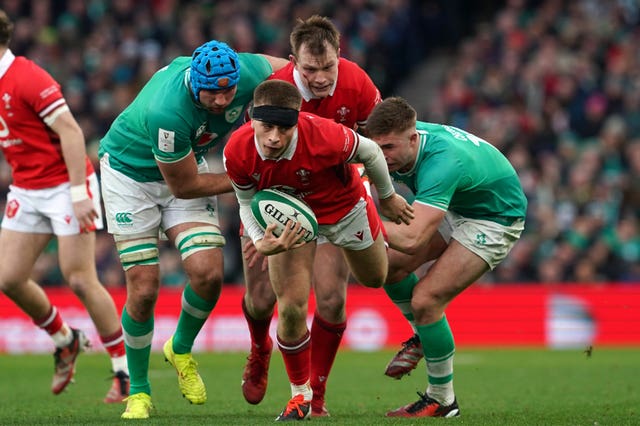
Ireland and Scotland savoured victories in the third round of the Guinness Six Nations and Italy claimed an historic 13-13 draw against France, the first time the Azzurri have avoided Championship defeat away to Les Bleus.
Here, the PA news agency looks at five things we learned from the weekend’s action.
Mouthguards concern

New technology surrounding mouthguards are concerning Scotland head coach Gregor Townsend. Scotland temporarily lost a second player in successive Six Nations matches for a head injury assessment triggered by the new technology. This championship is the first time elite male players have worn ‘instrumented’ mouthguards that send alerts whenever a ‘head acceleration event’ with G-force that exceeds 70g and 4,000 radians per second squared is detected. But Townsend said after Calcutta Cup success: “There’s a bit more work to do before this technology is correct.”
Ireland appear unstoppable

No side has managed back-to-back Grand Slams in the Six Nations era, but Ireland are within two games of doing so and it would take a brave punter to bet against them. Ireland recorded an 18th straight home win with a routine 31-7 success over Wales, equalling England’s Six Nations record of 11 consecutive victories. Andy Farrell’s side did not even have to produce their best to claim a third bonus-point win from three games – and now only England at Twickenham and Scotland in Dublin can stop Ireland holding another Grand Slam party.
Scotland have England’s number
A historic moment 🏴🏆#AsOne pic.twitter.com/rjHx1NKe5s
— Scottish Rugby (@Scotlandteam) February 24, 2024
The last time Scotland won four Calcutta Cups in a row Queen Victoria was on the throne and Lord Salisbury was Prime Minister. The year was 1896 and England failed to get on the board in a 11-0 Glasgow defeat. Over a century on, England slid to a 30-21 loss as Duhan Van Der Merwe supplied the Murrayfield magic in front of Harry Potter author JK Rowling. Van Der Merwe became the first Scotland player to score a Calcutta Cup hat-trick in moving to within one of the country’s all-time record try-scorer Stuart Hogg.
Feyi-Waboso hits right notes
𝐈𝐧𝐬𝐭𝐚𝐧𝐭 𝐈𝐦𝐩𝐚𝐜𝐭 💥
Immanuel Feyi-Waboso straight over the try line for @EnglandRugby 😎#GuinnessM6N #SCOENG pic.twitter.com/fmnhWCPluH
— Guinness Men's Six Nations (@SixNationsRugby) February 24, 2024
New England wing Immanuel Feyi-Waboso is known to tickle the ivories and apparently impressed head coach Steve Borthwick with his piano-playing at the team hotel. Borthwick would also have admired the way Feyi-Waboso sped through for his first Test try after coming on as a Murrayfield replacement. The powerful 21-year-old, who was born in Cardiff to Nigerian parents, spotted space and cut a delicious line to score. It was a touch of class to a predictable attacking performance from England, and calls for a starting spot are now set to be deafening.
Winnett is a winner

Full-back was potentially a problem position for Wales heading into the Six Nations, with Liam Williams unavailable due to club commitments in Japan, Leigh Halfpenny having retired from Test rugby and the versatile Louis Rees-Zammit quitting rugby union to try and forge an American football career. But step forward Cameron Winnett, who looks to the manner born just three games into his Test career. The 21-year-old has excelled in all areas and he was arguably Wales’ best player against Ireland. Nothing seems to fluster him.

Enjoy the convenience of having The Sunday Post delivered as a digital ePaper straight to your smartphone, tablet or computer.
Subscribe for only £5.49 a month and enjoy all the benefits of the printed paper as a digital replica.
Subscribe